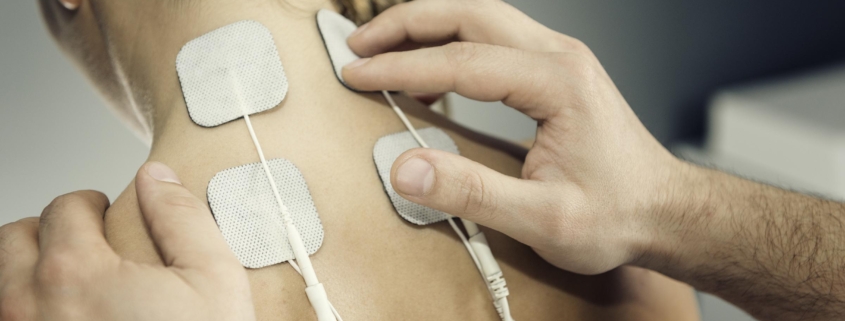
Transcutaneous Electrical Stimulation (TENS) for Cervical Spine Pain
Overview
Transcutaneous Electrical Nerve Stimulation, frequently abbreviated as TENS, is a non-invasive, safe, and drug-free method of pain relief commonly used for managing cervical spine pain. This therapy employs a device that sends electrical impulses to specific areas of the body to relieve pain. It is a highly effective treatment option for patients experiencing pain related to a variety of conditions, including cervical spine disorders.
Types
There are two types of TENS therapy: traditional TENS and acupuncture-like TENS (also known as low-frequency TENS). Traditional TENS employs a higher frequency of electrical pulses, typically above 50 Hz. This type of therapy is usually used for acute pain. Low-frequency TENS mimics the effects of acupuncture by producing a slow, steady pulse of electricity, generally below 10 Hz, which is often employed to manage chronic pain conditions.
Causes
Cervical spine pain can stem from various conditions including:
-
- Postural issues: This results from improper sitting or standing positions that put undue pressure on the neck and spine.
-
- Whiplash: This is a common injury resulting from sudden force that causes the neck to jerk back and forth.
-
- Cervical degenerative disc disease: This condition results from wear and tear of the cervical discs.
-
- Cervical herniated disc: This occurs when the disc’s inner content seeps out and presses on the nerve roots.
Symptoms
Symptoms associated with cervical spine pain may include:
-
- Pain around the neck area
-
- Stiffness in the neck
-
- Headaches
-
- Pain that radiates down into the shoulders, arms, or fingers
-
- Numbness or tingling in the arms and hands
-
- Difficulty in coordination and walking
Diagnosis
Your health provider will perform a physical examination and take a detailed medical history. During the physical exam, your doctor may apply pressure to your neck, shoulders, and arms to check for discomfort. Imaging tests such as X-rays, CT scans, or MRI may be required for further analysis. In some cases, a nerve function test may be requested to determine if the pain is due to cervical spine disorders.
Treatment Options
Apart from TENS therapy, additional treatment options for cervical spine pain include:
-
- Medications: Over-the-counter pain relievers, opioids, corticosteroids, or muscle relaxants may be used.
-
- Physical therapy: Exercises to improve your posture, increase flexibility, and strengthen muscles.
-
- Surgery: In severe cases where other treatments have not worked, surgery might be necessary.
Living With Transcutaneous Electrical Stimulation (TENS) for Cervical Spine Pain
Implementing TENS therapy into your daily routine can greatly reduce cervical spine pain. Here are some tips for effectively managing your condition with TENS:
-
- Optimal electrode placement: Work with your healthcare provider to identify the best locations to place the TENS electrodes on your body.
-
- Frequency of use: Use your TENS unit as directed by your healthcare provider. Overuse can lead to the body becoming accustomed to the stimulation, making treatment less effective over time.
-
- Medication management: While TENS can significantly reduce pain, it may not eliminate it entirely. Be sure to continue managing your medication as directed by your healthcare provider.
When to Seek Help
If you experience increased pain, numbness, weakness, or changes in bladder and bowel functions or if you notice any skin irritation from the TENS unit, seek immediate medical attention. Furthermore, pregnant women, individuals with heart problems, those with epilepsy, and those with a pacemaker should always consult their healthcare provider before using a TENS unit. Remember, early intervention can minimize long-term pain and disability, so don’t hesitate to seek help when necessary.
